Abstract
From several presumably pure cultures of Thiobacillus ferrooxidans, we isolated a pair of stable phenotypes. One was a strict autotroph utilizing sulfur or ferrous iron as the energy source and unable to utilize glucose; the other phenotype was an acidophilic obligate heterotroph capable of utilizing glucose but not sulfur or ferrous iron. The acidophilic obligate heterotroph not only was encountered in cultures of T. ferrooxidans, but also was isolated with glucose-mineral salts medium, pH 2.0, directly from coal refuse. By means of deoxyribonucleic acid homology, we have demonstrated that the acidophilic heterotrophs are of a different genotype from T. ferrooxidans, not closely related to this species; we have shown also that the acidophilic obligate heterotrophs, regardless of their source of isolation, are related to each other. Therefore, cultures of T. ferrooxidans reported capable of utilizing organic compounds should be carefully examined for contamination. The acidophilic heterotrophs isolated by us are different from T. acidophilis, which is also associated with T. ferrooxidans but is facultative, utilizing both glucose and elemental sulfur as energy sources. Since they are so common and tenacious in T. ferrooxidans cultures, the heterotrophs must be associated with T. ferrooxidans in the natural habitat.
Full text
PDF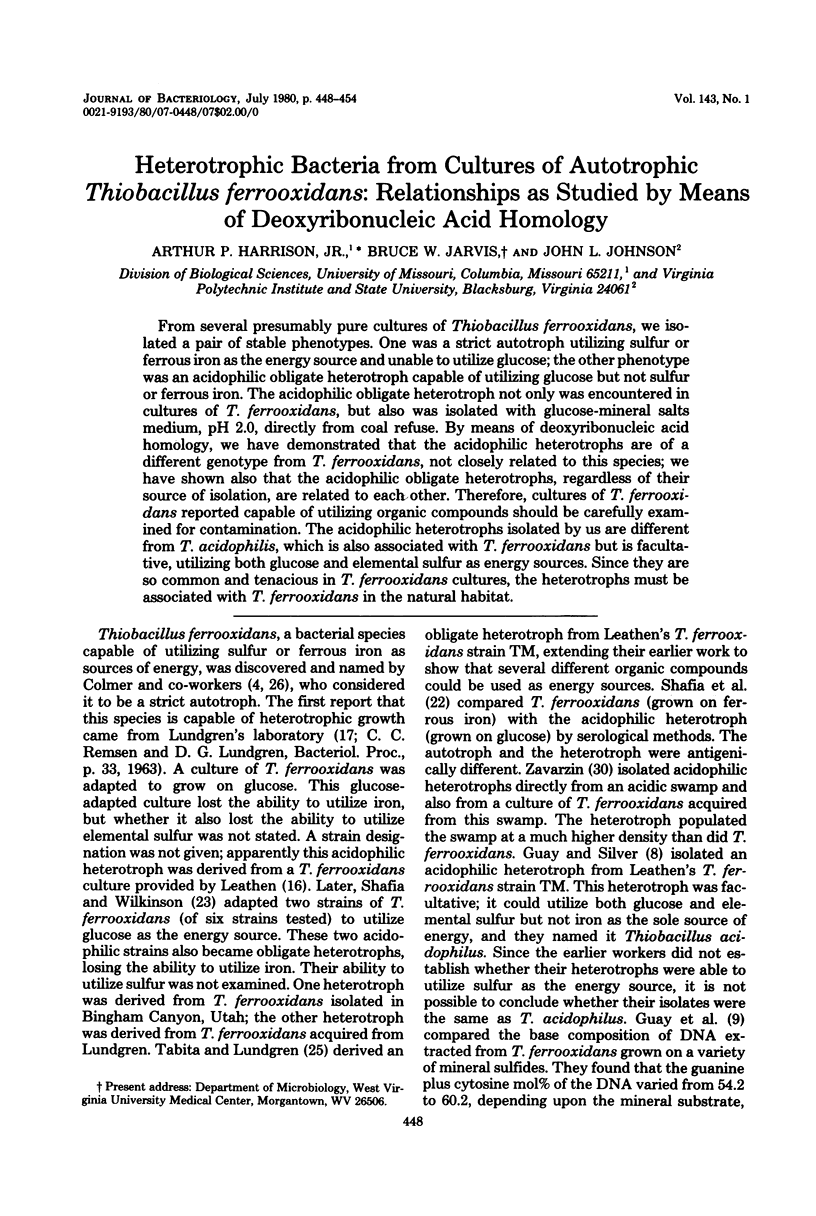
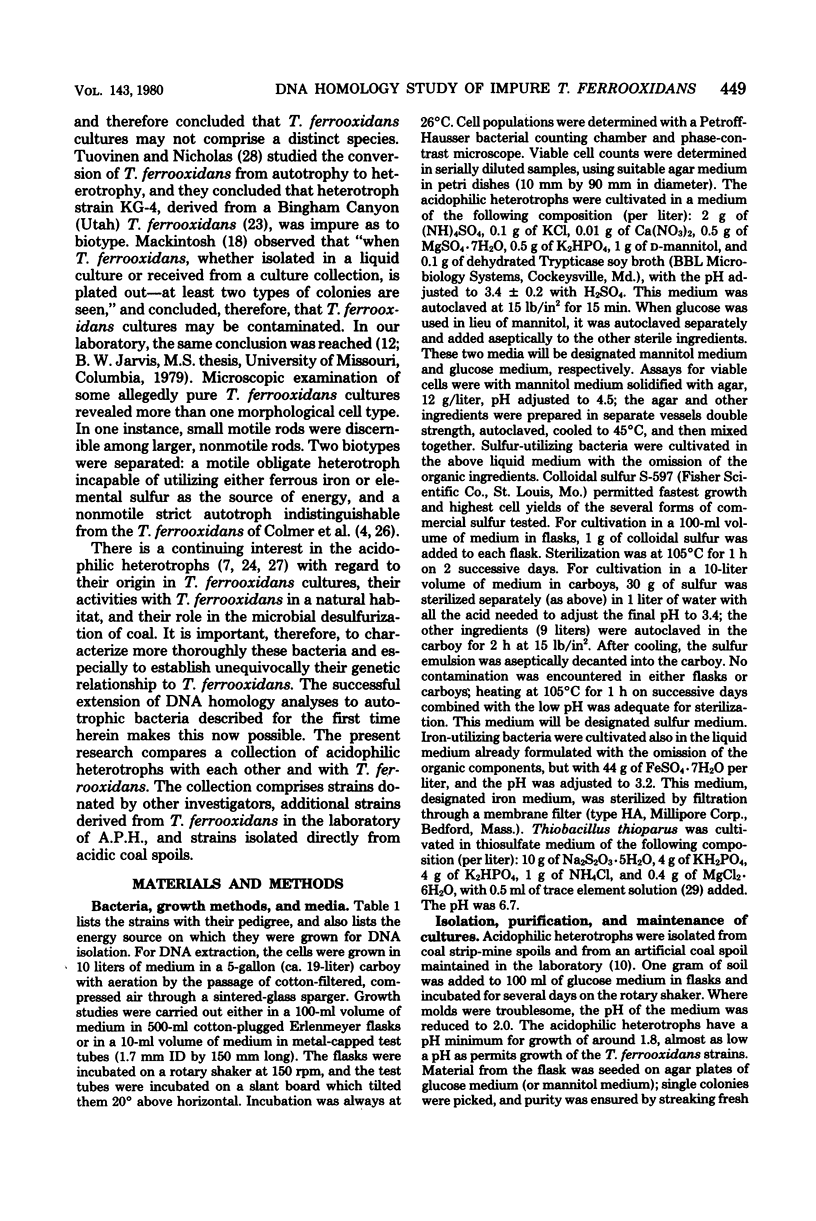
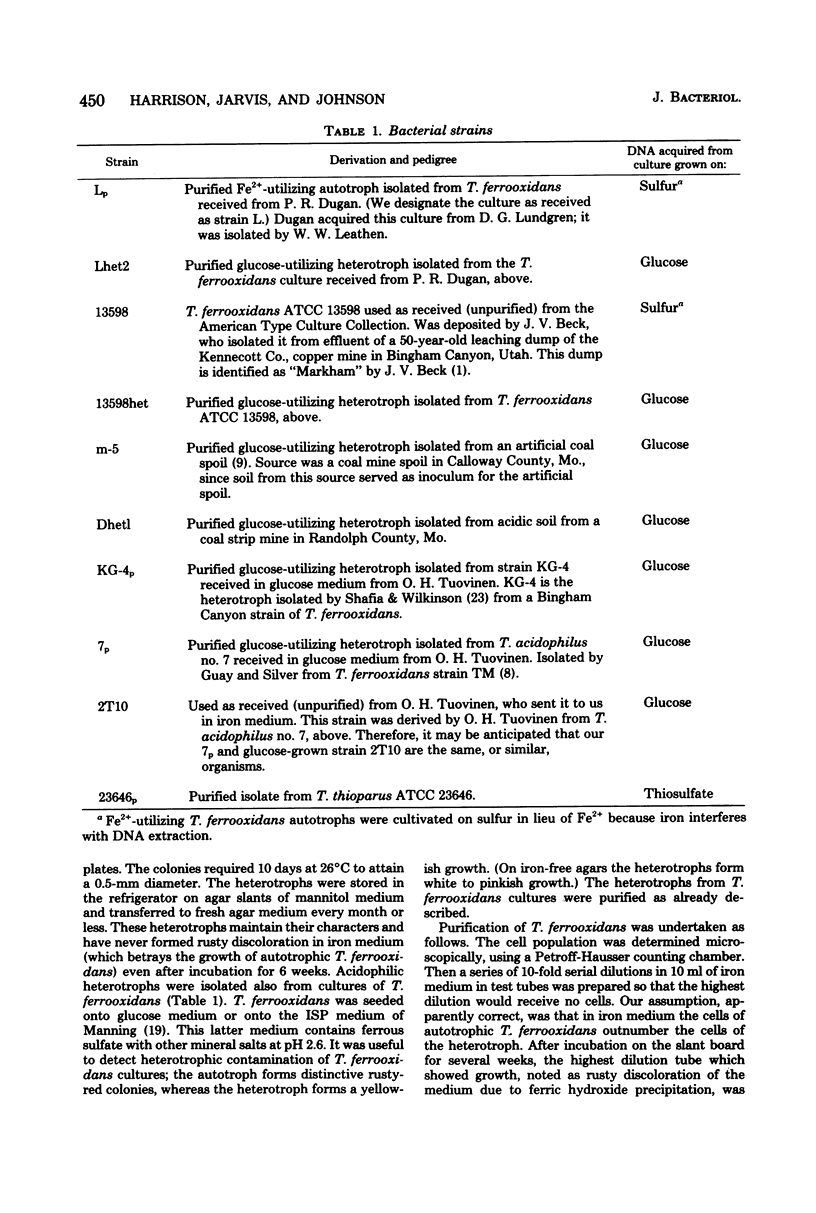
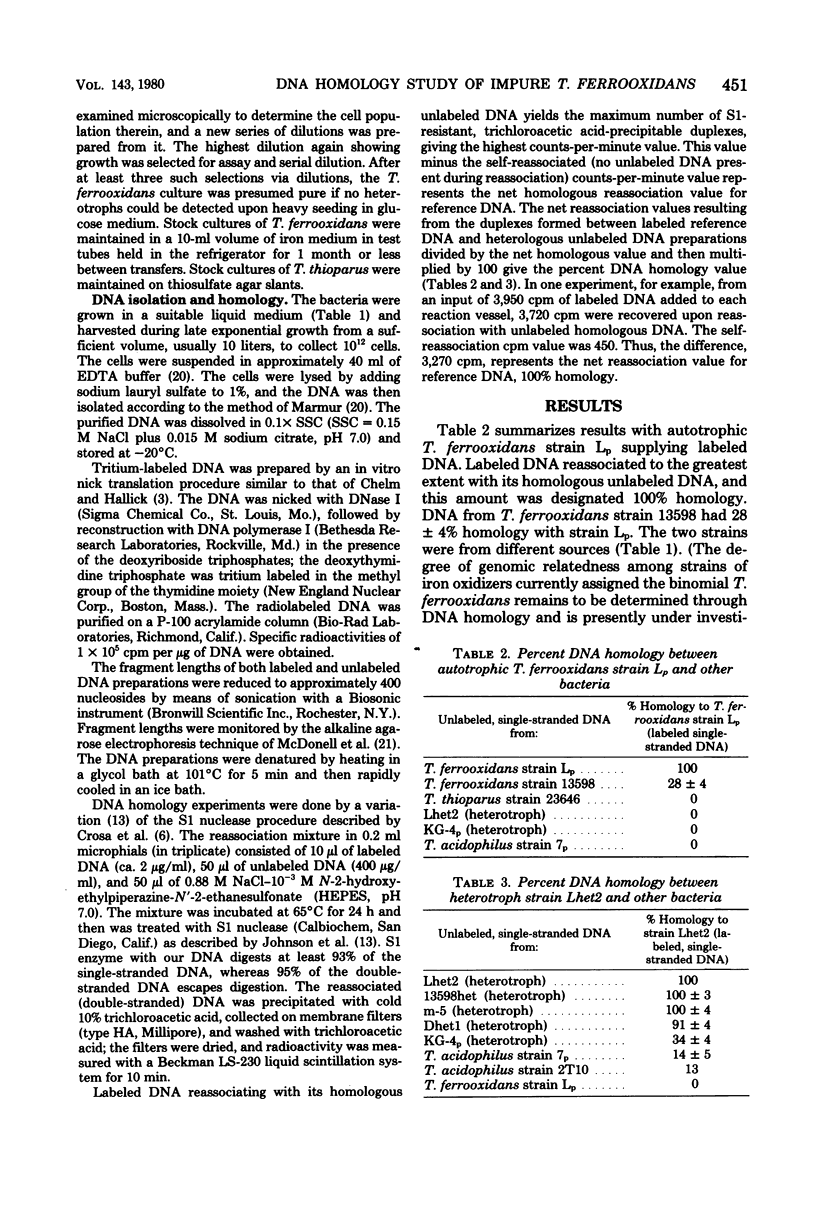
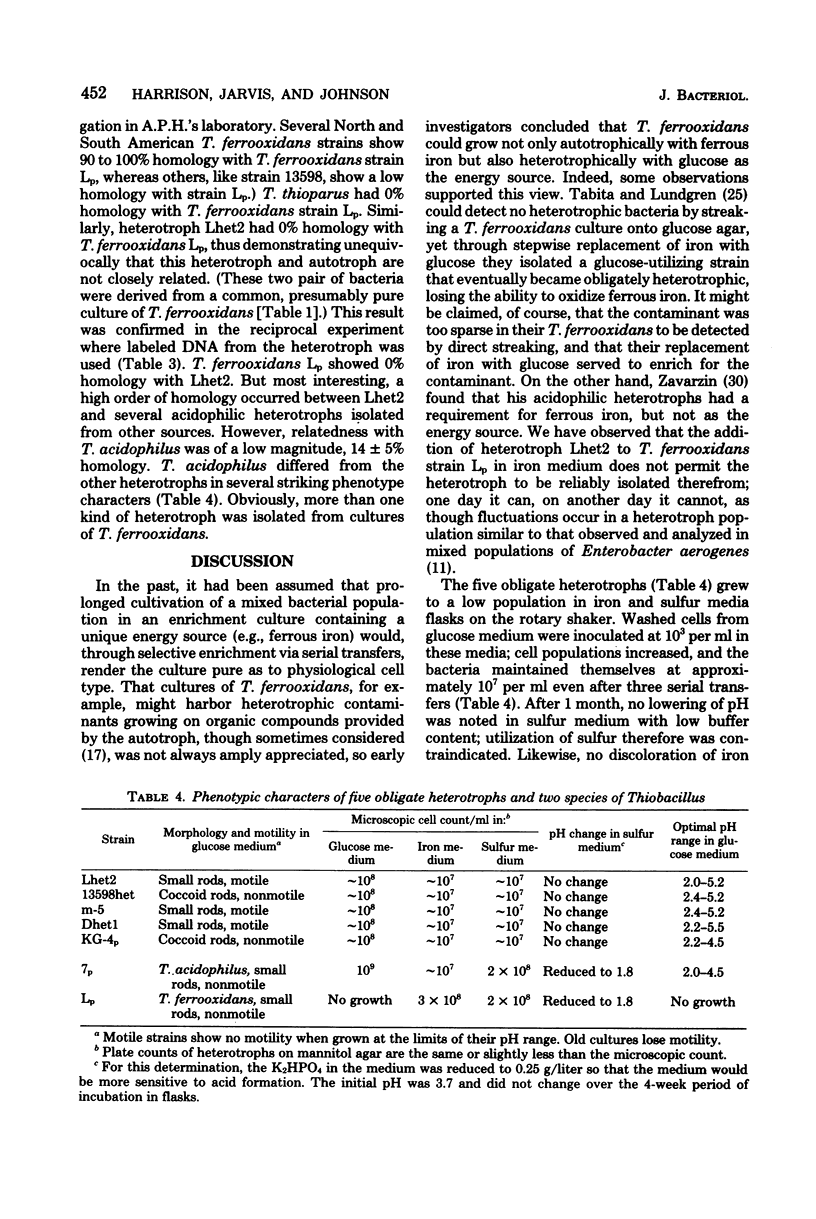
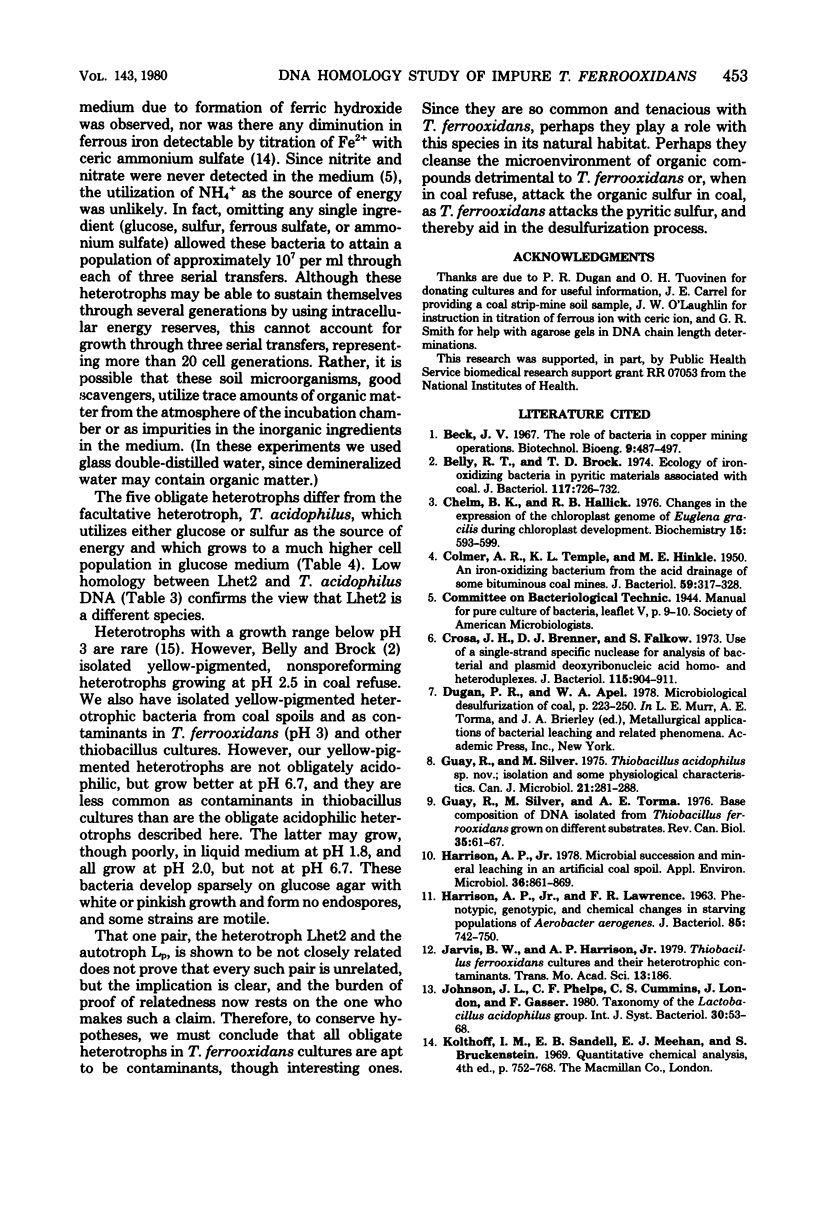
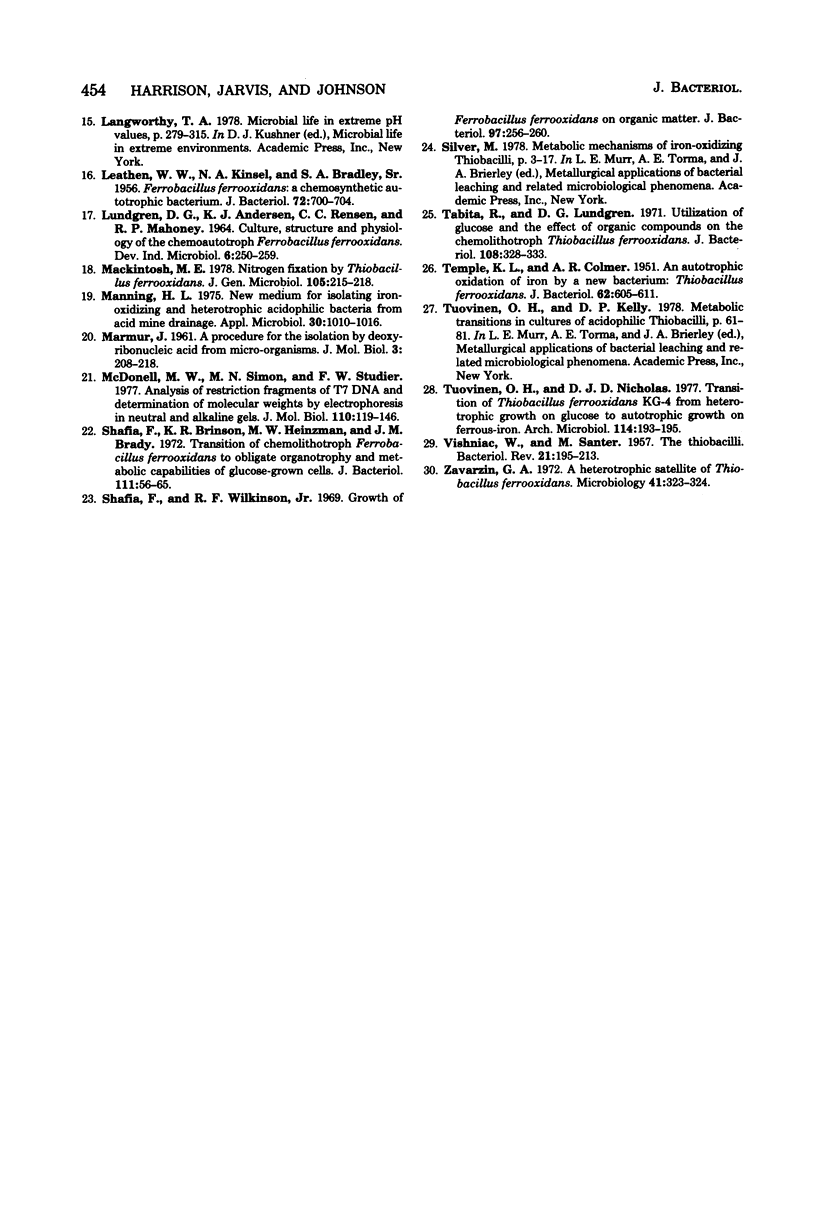
Selected References
These references are in PubMed. This may not be the complete list of references from this article.
- BRALEY S. A., Sr, KINSEL N. A., LEATHEN W. W. Ferrobacillus ferrooxidans: a chemosynthetic autotrophic Bacterium. J Bacteriol. 1956 Nov;72(5):700–704. doi: 10.1128/jb.72.5.700-704.1956. [DOI] [PMC free article] [PubMed] [Google Scholar]
- Belly R. T., Brock T. D. Ecology of iron-oxidizing bacteria in pyritic materials associated with coal. J Bacteriol. 1974 Feb;117(2):726–732. doi: 10.1128/jb.117.2.726-732.1974. [DOI] [PMC free article] [PubMed] [Google Scholar]
- COLMER A. R., TEMPLE K. L., HINKLE M. E. An iron-oxidizing bacterium from the acid drainage of some bituminous coal mines. J Bacteriol. 1950 Mar;59(3):317–328. doi: 10.1128/jb.59.3.317-328.1950. [DOI] [PMC free article] [PubMed] [Google Scholar]
- Chelm B. K., Hallick R. B. Changes in the expression of the chloroplast genome of Euglena gracilis during chloroplast development. Biochemistry. 1976 Feb 10;15(3):593–599. doi: 10.1021/bi00648a022. [DOI] [PubMed] [Google Scholar]
- Crosa J. H., Brenner D. J., Falkow S. Use of a single-strand specific nuclease for analysis of bacterial and plasmid deoxyribonucleic acid homo- and heteroduplexes. J Bacteriol. 1973 Sep;115(3):904–911. doi: 10.1128/jb.115.3.904-911.1973. [DOI] [PMC free article] [PubMed] [Google Scholar]
- Guay R., Silver M. Thiobacillus acidophilus sp. nov.; isolation and some physiological characteristics. Can J Microbiol. 1975 Mar;21(3):281–288. doi: 10.1139/m75-040. [DOI] [PubMed] [Google Scholar]
- Guay R., Silver M., Torma A. E. Base competition of DNA isolated from Thiobacillus ferrooxidans grown on different substrates. Rev Can Biol. 1976 Jun;35(2):61–67. [PubMed] [Google Scholar]
- HARRISON A. P., Jr, LAWRENCE F. R. PHENOTYPIC, GENOTYPIC, AND CHEMICAL CHANGES IN STARVING POPULATIONS OF AEROBACTER AEROGENES. J Bacteriol. 1963 Apr;85:742–750. doi: 10.1128/jb.85.4.742-750.1963. [DOI] [PMC free article] [PubMed] [Google Scholar]
- Harrison A. P., Jr Microbial succession and mineral leaching in an artificial coal spoil. Appl Environ Microbiol. 1978 Dec;36(6):861–869. doi: 10.1128/aem.36.6.861-869.1978. [DOI] [PMC free article] [PubMed] [Google Scholar]
- Manning H. L. New medium for isolating iron-oxidizing and heterotrophic acidophilic bacteria from acid mine drainage. Appl Microbiol. 1975 Dec;30(6):1010–1016. doi: 10.1128/am.30.6.1010-1016.1975. [DOI] [PMC free article] [PubMed] [Google Scholar]
- McDonell M. W., Simon M. N., Studier F. W. Analysis of restriction fragments of T7 DNA and determination of molecular weights by electrophoresis in neutral and alkaline gels. J Mol Biol. 1977 Feb 15;110(1):119–146. doi: 10.1016/s0022-2836(77)80102-2. [DOI] [PubMed] [Google Scholar]
- Shafia F., Brinson K. R., Heinzman M. W., Brady J. M. Transition of chemolithotroph Ferrobacillus ferrooxidans to obligate organotrophy and metabolic capabilities of glucose-grown cells. J Bacteriol. 1972 Jul;111(1):56–65. doi: 10.1128/jb.111.1.56-65.1972. [DOI] [PMC free article] [PubMed] [Google Scholar]
- Shafia F., Wilkinson R. F., Jr Growth of Ferrobacillus ferrooxidans on organic matter. J Bacteriol. 1969 Jan;97(1):256–260. doi: 10.1128/jb.97.1.256-260.1969. [DOI] [PMC free article] [PubMed] [Google Scholar]
- TEMPLE K. L., COLMER A. R. The autotrophic oxidation of iron by a new bacterium, thiobacillus ferrooxidans. J Bacteriol. 1951 Nov;62(5):605–611. doi: 10.1128/jb.62.5.605-611.1951. [DOI] [PMC free article] [PubMed] [Google Scholar]
- Tabita R., Lundgren D. G. Utilization of glucose and the effect of organic compounds on the chemolithotroph Thiobacillus ferrooxidans. J Bacteriol. 1971 Oct;108(1):328–333. doi: 10.1128/jb.108.1.328-333.1971. [DOI] [PMC free article] [PubMed] [Google Scholar]
- VISHNIAC W., SANTER M. The thiobacilli. Bacteriol Rev. 1957 Sep;21(3):195–213. doi: 10.1128/br.21.3.195-213.1957. [DOI] [PMC free article] [PubMed] [Google Scholar]


